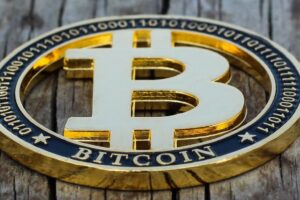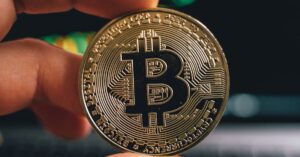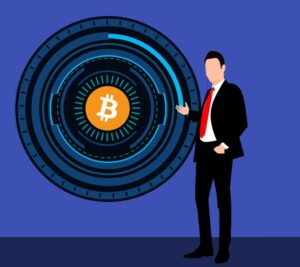Two Different Ideas Of The Lightning Network

Lightning has been on an explosive growth tear lately in terms of more liquidity coming to the network. Since the start of 2021, the network has grown from 33,000 or so channels to more than 65,000. The amount of bitcoin in those channels has grown from around 1,000 BTC to almost 2,500. This is widely viewed as a massive indicator of success, and it is, but it is starting to illuminate a growing divide in attitude about what will actually dominate the incentives of individual node operators in the future. This rapid growth has led to a diminishing return in routing fees for node operators, and some of them don’t care.
Since the launch of PLEBNET (not to say this is causally related, just when it started coming to my attention), I have been seeing more and more Lightning node operators espousing the attitude that they do not care about earning routing fees for running their node. This stands in complete contrast to all of my long-term thinking about how the Lightning Network will evolve financially. And I don’t mean “don’t want to earn a profit” in routing, I mean literally not charging routing fees. This seems completely irrational in terms of economic incentives, and for any misrepresentation of the reasons people want to run a node like this I apologize. To me it seems like people want to engage in this behavior out of a sense of altruism and to maintain Lightning as a “pleb-owned” piece of financial infrastructure. I don’t see this as economically sustainable.
Conventional Thinking Of Profit Incentives
Before we get into the dynamic of profit, let’s just consider the cost side of things. In order to close and open a Lightning channel you have to transact on-chain, which incurs a miner fee. This is completely inescapable and is the base cost to enter or leave the Lightning Network. Now consider the routing fees collected in relation to these on-chain fees, if the routing fees are in excess of on-chain fees, you pocket a profit and if they are less you incur a loss. So obviously an economically rational node operator’s goal should be to maximize the routing fees they collect in a competitive market so that, before the end of a channel’s lifetime, they have earned more in routing fees than they paid to open the channel and will pay to close the channel.
As more liquidity enters the Lightning Network on average, the amount in routing fees nodes will collect will go down, as we’ve seen for many node operators during this year’s massive growth of channels and liquidity. Now it’s a little more nuanced than just “more money = everyone makes less money,” as many people point out, channels and their liquidity are not quite fungible. A channel open to a large merchant everyone frequents is going to be able to collect higher fees than a channel open to a random guy named Bob some people occasionally send small payments to. But as more channels are opened to that large merchant, fees in those channels will trend down as people try to competitively undercut each other on price. That’s just basic economics.
The way I’ve always seen the Lightning Network evolving long term is economic competition over placing channels between nodes or entities that have high transactional demand. Those that can do this cost effectively will earn a nice profit, and those that can’t will, so to speak, “be put out of business.” Also a last mention before moving on, obviously, in this mode of thinking, as on-chain fees increase over time by necessity routing fees will increase as well.
Nonprofit-Oriented Thinking
Now let’s consider a routing node operator who is not concerned with profits. I’m going to consider two subcategories here, those who will at least recoup their costs and those who will not even care about doing that.
Operators who still aim to recover their costs will still have to charge routing fees but, because of not caring to earn profit on top of that, they will be able to undercut profit-seeking routing nodes in terms of fees. This will inevitably lead to such nodes attracting more volume than ones charging higher fees in search of profit and eat into the revenue of profit-seeking nodes. Now taking into account the dynamic of more liquidity dragging down revenue, this could, potentially, if a large enough number of nodes operate under such a model, make it much more difficult (or in the extreme, potentially impossible) to earn a profit routing transactions on Lightning.
In the case of node operators who don’t even care about recouping their costs, the same type of dynamic with profit-seeking nodes exists but with two major differences: The nodes “distorting” the market in this way are actually in the long term going to incur a loss and the profit seeking nodes because of that could actually themselves be pushed into incurring losses to stay competitive instead of just missing out on profits. Obviously though, this becomes a game of chicken in the extreme, and eventually someone has to blink. I do not believe for a second, especially as fees go up, that someone will just, in perpetuity, continue losing money to subsidize other people’s Layer 2 transactions.
Rounding It Off
There are some deeper nuances I’ve left out above just to keep the mental models I’m describing simple, such as route-finding heuristics that might intentionally look for routes that charge higher fees as a sign of higher reliability, channel rebalancing to delay touching the blockchain longer, and so on but I think, even considering all of these things, one major dynamic remains: These are two entirely different economic schools of thought in terms of motivations and incentives to operate routing nodes on the Lightning Network. They will not exist in a vacuum, they will interact with each other in the same marketplace as the network continues growing. It will be interesting to see how that plays out.
This is a guest post by Shinobi. Opinions expressed are entirely their own and do not necessarily reflect those of BTC, Inc. or Bitcoin Magazine.
Source link
#Ideas #Lightning #Network





